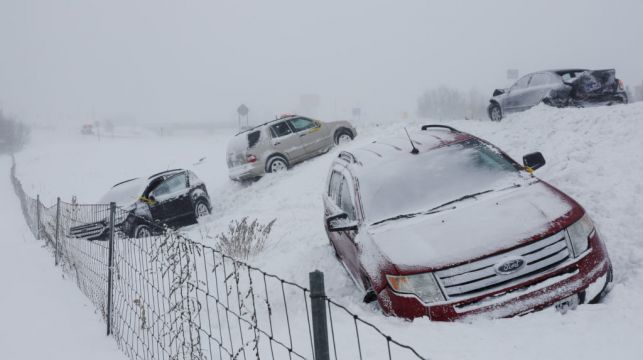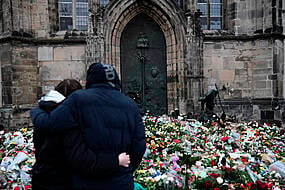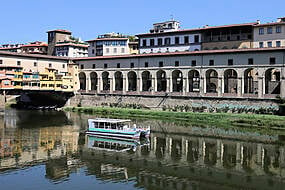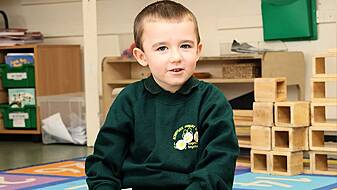A utility worker has died while trying to restore power in southeastern Ohio, and people in Kentucky, Michigan and Wisconsin also died with much of the US in the grip of a massive winter storm.
Across the country, officials have attributed at least 17 deaths to exposure, icy car crashes and other effects of the storm.
The storm has continued to envelop much of the US, bringing blinding blizzards, freezing rain, flooding and life-threatening cold that created mayhem for people travelling for the Christmas holiday.
It downed power lines, littered roads with piles of cars in fatal accidents and led to mass flight cancellations.
The storm was nearly unprecedented in its scope, stretching from the Great Lakes near Canada to the Rio Grande along the border with Mexico.
About 60% of the US population faced some sort of winter weather advisory or warning, and temperatures plummeted well below normal from east of the Rocky Mountains to the Appalachians, the National Weather Service said.
Freezing rain coated much of the Pacific Northwest in a layer of ice, while people in the north east faced the threat of coastal and inland flooding.
The frigid temperatures and gusty winds were expected to produce “dangerously cold wind chills across much of the central and eastern US this holiday weekend”, the weather service said, adding that conditions “will create a potentially life-threatening hazard for travellers that become stranded”.

“In some areas, being outdoors could lead to frostbite in minutes,” it said.
Late on Friday power outages were still affecting more than a million homes and businesses, according to the website PowerOutage, which tracks utility reports.
A major electricity grid operator that serves 65 million people across the eastern US says power plants are having difficulty operating in the frigid weather and has asked residents to refrain from unnecessary use of electricity.
Pennsylvania-based PJM Interconnection issued the emergency call for conservation system-wide – asking residents in 13 states to set thermostats lower than usual, to postpone use of major appliances like ovens and dishwashers and to turn off nonessential lights.
Commercial and industrial power users have also been asked to cut back.
PJM officials said they want people to be prepared for the possibility of rolling blackouts.
“It’ll be short-lived, we’ll do everything we can to prevent it, but it is a real possibility,” said Mike Bryson, PJM’s senior vice president for operations.

As millions of Americans were travelling ahead of Christmas, more than 5,700 flights were cancelled on Friday, according to the tracking site FlightAware.
Multiple roads were closed and crashes killed at least eight people, officials said.
At least four people died in a massive pile-up involving 50 vehicles on the Ohio Turnpike. A Kansas City driver was killed on Thursday after skidding into a creek, and three others died on Wednesday in separate crashes on icy northern Kansas roads.
A 51-year-old woman died on Friday after a tree in her back garden fell on her in west-central Vermont near the New York border.
In New York, an Erie County official said two people died in their homes when emergency crews could not reach them in time to treat their medical emergencies. The Colorado Gazette reported that police found the dead body of a person who appeared to be homeless near a mall on Thursday.
In Canada, WestJet cancelled all flights on Friday at Toronto Pearson International Airport, as meteorologists warned of a potential once-in-a-decade weather event.
In Mexico, migrants camped near the US border in unusually cold temperatures as they awaited a Supreme Court decision on pandemic-era restrictions that prevent many from seeking asylum.
Forecasters said a bomb cyclone — when atmospheric pressure drops very quickly in a strong storm — had developed near the Great Lakes, stirring up blizzard conditions, including heavy winds and snow.

Even people in Florida were braced for unusually chilly weather as rare freeze warnings were issued for large parts of the state over the holiday weekend.
Calling it a “kitchen sink storm”, New York governor Kathy Hochul declared a state of emergency. In parts of New York City, tidal flooding inundated roads, homes and businesses on Friday.
In Boston, rain combined with a high tide flooded some central streets on Friday.







